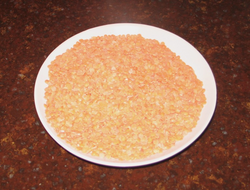Legumes: protein and much more
Published: August 10, 2018
Legumes or pulses are plants that belong to the bean family.
The botanical family, Fabaceae or Leguminosae, includes black beans, black-eyed beans, garbanzo beans (chick peas), kidney beans, navy beans, lima beans, pinto beans, soy beans, broad beans and butter beans.
Green, brown and red lentils, green and yellow split peas, and peanuts also belong to the bean family.
Alfalfa, clover, lupins, mesquite, carob, tamarind, wisteria, and the Locust and the Kentucky coffee tree are also legumes, but not all are edible.
Farmed legumes are classified as grains, forage, and blooms as well as having pharmaceutical and other industrial uses, and may be used as manure and species of timber.
Edible legumes are the dried fruits or seeds which develop in the pods of the plants and are referred to as grain legumes. The seeds are released when the pods split open.
Grain legumes are cultivated for both human and animal consumption.
From a human nutrition perspective grain legumes are a valuable addition to a health promoting eating plan.
Legumes are typically good sources of protein, carbohydrate, fibre, thiamin, folate, vitamin E, potassium, magnesium, iron, and zinc with a ½ cup of cooked legumes providing about 15 g of carbohydrate, of which about 6-8 g is fibre.
Legumes have a low fat content and generally have a low to medium glycemic index: GI < 50, although the GI of canned legumes products may be slightly higher than home cooked legumes due to high temperatures associated with processing.
Cholesterol, abundant in animal foods is absent from plant foods and legumes are also typically low in sodium, except for canned products where salt is used as a preservative.
Nutritional facts
Although legumes are considered a good source of protein they contain relatively low quantities of the essential amino acids methionine and tryptophan when compared to animal protein found in eggs, dairy, meat, poultry, game and fish.
However, this deficiency can be compensated for either by consuming legumes as part of a varied mixed diet which includes animal protein, or in the case of vegan and vegetarian eating plans ensuring that adequate amounts of grains, nuts and seeds are also included.
Grains such as wheat products, rice, barley, rye, quinoa, while low in the essential amino acids...link to the full article to learn more.
References
1.
Whitney, E. & Rady Rolfes, S. (2005). Understanding Nutrition. Belmont, CA: Thomson Wadsworth
2.
Benardot, D. (2006). Advanced Sports Nutrition. Human Kinetics. USA

